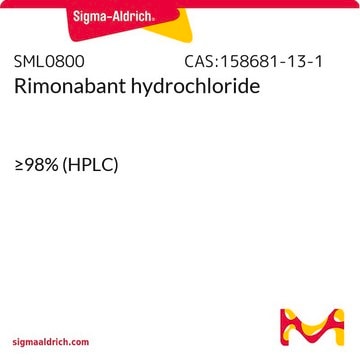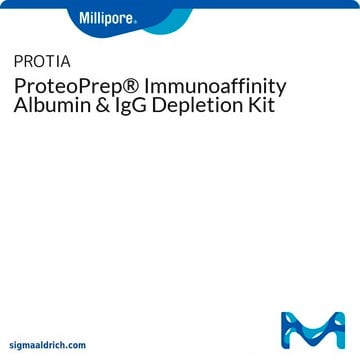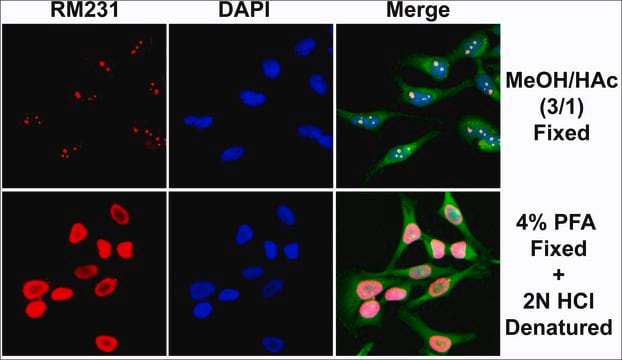MAB16200
Anti-MGMT Antibody, clone MT3.1
clone MT3.1, Chemicon®, from mouse
Synonym(s):
O-6-methylguanine-DNA Methyltransferase, Methylated-DNA--Protein-cysteine Methyltransferase
About This Item
Recommended Products
biological source
mouse
Quality Level
antibody form
purified immunoglobulin
antibody product type
primary antibodies
clone
MT3.1, monoclonal
species reactivity
human
manufacturer/tradename
Chemicon®
technique(s)
flow cytometry: suitable
immunocytochemistry: suitable
immunohistochemistry: suitable (paraffin)
immunoprecipitation (IP): suitable
western blot: suitable
isotype
IgG1
NCBI accession no.
UniProt accession no.
shipped in
wet ice
target post-translational modification
unmodified
Gene Information
human ... MGMT(4255)
Related Categories
General description
Specificity
Immunogen
Application
An independent laboratory used a previous lot on flow cytometry (Gerson, 1996).
Immunoprecipitation:
A previous lot of this antibody was used on Immunoprecipitation.
Immunohistochemistry:
A previous lot of this antibody was used on paraffin embedded sections.
Optimal working dilutions must be determined by end user.
Epigenetics & Nuclear Function
Cell Cycle, DNA Replication & Repair
Quality
Western Blot Analysis:
1:500 dilution of this antibody detected MGMT on 10 µg of Jurkat lysates.
Target description
Physical form
Storage and Stability
Analysis Note
Positive Control: Tonsil tissue, HeLa cells, CEM-CCRF cells.
Negative Control: TK6 cells.
Other Notes
Legal Information
Disclaimer
Not finding the right product?
Try our Product Selector Tool.
recommended
Storage Class Code
12 - Non Combustible Liquids
WGK
WGK 2
Flash Point(F)
Not applicable
Flash Point(C)
Not applicable
Certificates of Analysis (COA)
Search for Certificates of Analysis (COA) by entering the products Lot/Batch Number. Lot and Batch Numbers can be found on a product’s label following the words ‘Lot’ or ‘Batch’.
Already Own This Product?
Find documentation for the products that you have recently purchased in the Document Library.
Our team of scientists has experience in all areas of research including Life Science, Material Science, Chemical Synthesis, Chromatography, Analytical and many others.
Contact Technical Service








